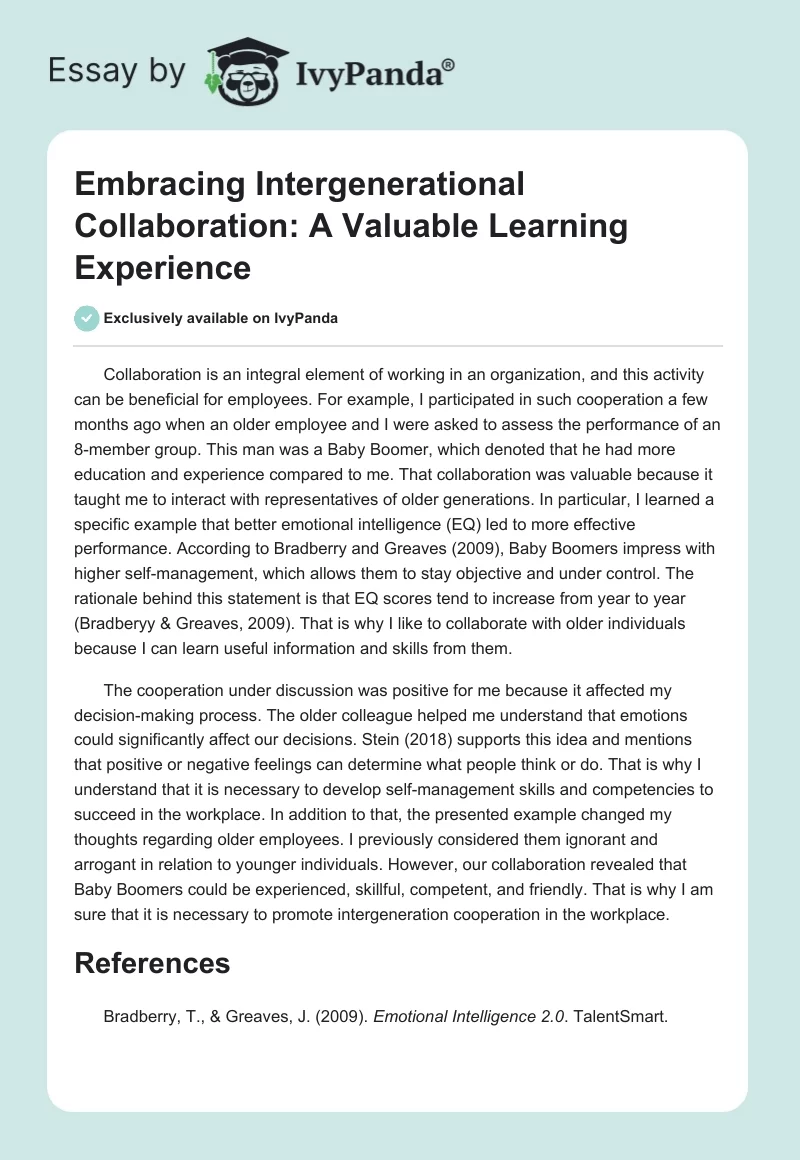Collaboration is an integral element of working in an organization, and this activity can be beneficial for employees. For example, I participated in such cooperation a few months ago when an older employee and I were asked to assess the performance of an 8-member group. This man was a Baby Boomer, which denoted that he had more education and experience compared to me. That collaboration was valuable because it taught me to interact with representatives of older generations. In particular, I learned a specific example that better emotional intelligence (EQ) led to more effective performance. According to Bradberry and Greaves (2009), Baby Boomers impress with higher self-management, which allows them to stay objective and under control. The rationale behind this statement is that EQ scores tend to increase from year to year (Bradberyy & Greaves, 2009). That is why I like to collaborate with older individuals because I can learn useful information and skills from them.
The cooperation under discussion was positive for me because it affected my decision-making process. The older colleague helped me understand that emotions could significantly affect our decisions. Stein (2018) supports this idea and mentions that positive or negative feelings can determine what people think or do. That is why I understand that it is necessary to develop self-management skills and competencies to succeed in the workplace. In addition to that, the presented example changed my thoughts regarding older employees. I previously considered them ignorant and arrogant in relation to younger individuals. However, our collaboration revealed that Baby Boomers could be experienced, skillful, competent, and friendly. That is why I am sure that it is necessary to promote intergeneration cooperation in the workplace.
References
Bradberry, T., & Greaves, J. (2009). Emotional Intelligence 2.0. TalentSmart.
Stein, S. (2018). The EQ leader: Instilling passion, creating shared goals, and building meaningful organizations through emotional intelligence. Wiley and Sons.


